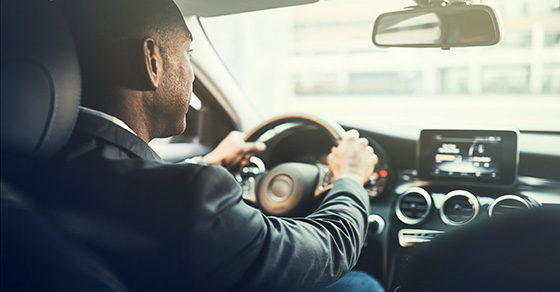Vehicle-expense deduction ins and outs for individual taxpayers
Vehicle-expense deduction ins and outs for individual taxpayers
It’s not just businesses that can deduct vehicle-related expenses. Individuals also can deduct them in certain circumstances. Unfortunately, the Tax Cuts and Jobs Act (TCJA) might reduce your deduction compared to what you claimed on your 2017 return.
For 2017, miles driven for business, moving, medical and charitable purposes were potentially deductible. For 2018 through 2025, business and moving miles are deductible only in much more limited circumstances. TCJA changes could also affect your tax benefit from medical and charitable miles.
Current limits vs. 2017
Before 2018, if you were an employee, you potentially could deduct business mileage not reimbursed by your employer as a miscellaneous itemized deduction. But the deduction was subject to a 2% of adjusted gross income (AGI) floor, which meant that mileage was deductible only to the extent that your total miscellaneous itemized deductions for the year exceeded 2% of your AGI. For 2018 through 2025, you can’t deduct the mileage regardless of your AGI. Why? The TCJA suspends miscellaneous itemized deductions subject to the 2% floor.
If you’re self-employed, business mileage is deducted from self-employment income. Therefore, it’s not subject to the 2% floor and is still deductible for 2018 through 2025, as long as it otherwise qualifies.
Miles driven for a work-related move in 2017 were generally deductible “above the line” (that is, itemizing isn’t required to claim the deduction). But for 2018 through 2025, under the TCJA, moving expenses are deductible only for certain military families.
Miles driven for health-care-related purposes are deductible as part of the medical expense itemized deduction. Under the TCJA, for 2017 and 2018, medical expenses are deductible to the extent they exceed 7.5% of your AGI. For 2019, the floor returns to 10%, unless Congress extends the 7.5% floor.
The limits for deducting expenses for charitable miles driven haven’t changed, but keep in mind that it’s an itemized deduction. So, you can claim the deduction only if you itemize. For 2018 through 2025, the standard deduction has been nearly doubled. Depending on your total itemized deductions, you might be better off claiming the standard deduction, in which case you’ll get no tax benefit from your charitable miles (or from your medical miles, even if you exceed the AGI floor).
Differing mileage rates
Rather than keeping track of your actual vehicle expenses, you can use a standard mileage rate to compute your deductions. The rates vary depending on the purpose and the year:
- Business: 54.5 cents (2018), 58 cents (2019)
- Medical: 18 cents (2018), 20 cents (2019)
- Moving: 18 cents (2018), 20 cents (2019)
- Charitable: 14 cents (2018 and 2019)
In addition to deductions based on the standard mileage rate, you may deduct related parking fees and tolls. There are also substantiation requirements, which include tracking miles driven.
Get help
Do you have questions about deducting vehicle-related expenses? Contact us. We can help you with your 2018 return and 2019 tax planning.
© 2019










